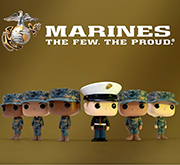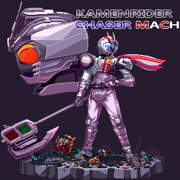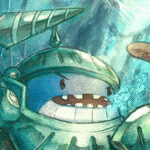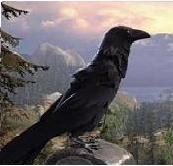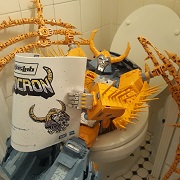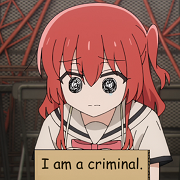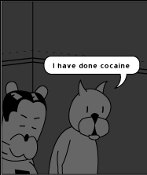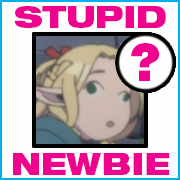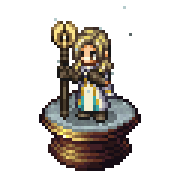|
my boy Shin finally getting his due 
|
|
|
|

|
| # ? Apr 23, 2024 10:47 |
|
A reboot of Shin Ultraman could be pretty great. But I'm not sure how well a "Shin Kamen Rider" in the style of Shin Godzilla and Shin Ultraman would work.
|
|
|
|
Kamen Rider The Third
|
|
|
|
Gripweed posted:A reboot of Shin Ultraman could be pretty great. But I'm not sure how well a "Shin Kamen Rider" in the style of Shin Godzilla and Shin Ultraman would work. Let me tell you a tale of Kamen Rider the First
|
|
|
|
RBX posted:What are the 3 best rider shows since Gaim came out? Just skip Ghost. And I mean the character as well as the show. Reiwa can also be skimmed/skipped.
|
|
|
|
On the topic of the best/worst of post-Gaim series, how do people feel about Zi-O now? Obviously the plot still nose dives in the end, but overall do you find yourselves thinking fondly of it or not and how does that compare to your opinion while you were watching? I find that for the most part I think of it as a decent series, though it took a little while to warm up to the characters. The .5 episodes certainly helped me like the cast and I feel like those are the feelings I still take with me. For someone looking for recommendations, though, I'm not sure I can recommend it unless you're going to be able to appreciate the cameos all the way through the future riders arc.
|
|
|
|
Eh, the show had problems but I generally liked the cast and some of the tribute arcs (like Blade for example which kind of served as an epilogue of sorts to the series proper). Decade being a semi-regular on the series wasn’t bad either. They also brought back more previous actors than Decade did and stuck to the main universe for the most part. Speaking of Decade, is Natsumi’s actress still working? It might be nice to see Kamen Rider Kivala again one day. Larryb fucked around with this message at 03:20 on Mar 4, 2021 |
|
|
|
Woz (woz)
|
|
|
|
Do you guys want this thing broken into halves where its kind of manageable or all in one big loving lump because I'm 4 thousand words deep and just got to GoRanger
|
|
|
|
I'd say split it up
|
|
|
|
Burkion posted:Do you guys want this thing broken into halves where its kind of manageable or all in one big loving lump because I'm 4 thousand words deep and just got to GoRanger Probably best to do it in pieces
|
|
|
|
Part one talks about the origins of tokusatsu (on film) and where and how the genre evolved from the 1910s through the 1970s. The history of tokusatsu begins with two men searching a mountain for Mad Dick. Willis O’Brien’s Mad Dick, to be specific. Maybe this isn’t where you expected this to start, though I’m sure a few of you did. What I am speaking of is not, self evidently, a Japanese work- it is instead the 1918 Ghost of Slumber Mountain, the first serious stop-motion animation production of Willis O’Brien’s career. It is also the film that can be firmly linked to the beginning of toku as we know it. Toku has deeper roots still, of course. Japanese theater in one form or fashion goes back at least to 300 AD. The cultural ties between it and its modern descendants are ubiquitous. But, so much so that it can get rather nebulous and not really be the point of what we’re talking about here. For context, this is about the different eras of toku, what defines them and how they are different from one another. And the answer to that is complicated and messy, but ultimately not overly so. So keeping things (largely) to film and TV, the direct chain leads back to Ghost of Slumber Mountain. You could argue for the hilariously racist Conquest of the Pole 1912, for having the first on screen giant monster done with practical effects. But I find Ghost of Slumber Mountain to be much cleaner. The point is made either way-toku’s history reaches back to the very dawn of cinema itself. This is important because I will not be tackling toku eras by Emperor Periods- Showa, Heisei, Reiwa will be ignored and for good reason. What is considered Heisei by some is considered Showa by others, as the literal dates do not matter as much to them. And all of the usual suspects have thorny issues involved there- Millenium, New Gen, ‘Neo Heisei’. So we’re dumping that and going with a broader, but more coherent, decade by decade grouping. Returning to Ghost of Slumber Mountain, it was a 45 minute film, though only about 18 minutes survive to this day, about two men going to search for a hermit, played by Willis O’Brien himself, named Mad Dick. Also one of the men requests the other strip naked and pose like a fawn so he can take photos. It’s that kind of film. Anyways they end up running into dinosaurs and a prehistoric bird in the earliest cinematic representation of them. The first ever T-Rex on film, and the first ever T-Rex VS Triceratops battle in fiction. You ever wonder why those two dinos are pitted against each other so often? This is why. The movie ends with a joke of it all being a dream, but the seeds were planted. The Lost World 1925 would come along and see the promise of Ghost realized. There was a blip in between but we’re not here to talk about Along the Moonbeam Trail. The Lost World was the first full length feature film of Willis O’Brien, using a combination of stunning suit work, animation and stop-motion animation to bring the novel to life. It is one of the first instances, maybe the first, of a ‘monster’ attacking a major city. Sir Athur Conan Doyle himself appears at the start of the film and showed proof of concepts of it to friends such as Harry Houdini to their utter astonishment. It was a pinnacle of cinema. King Kong 1933 would surpass it. I could write an entire essay on King Kong 1933- the themes of race and racism, the scope and scale of the film, the sheer impact and power it possesses- but now is not the time for it. King Kong is a pillar that wouldn’t be surpassed in terms of pure spectacle until the 60s. Of the two true remakes, ‘76 and ‘05, both suffer from trying to outperform what this film did. Son of Kong, also released in 1933, is...not good. It's not even a third as good. But given everything, that is no surprise. We leave Willis here, as his star would be inherited by Ray Harryhausen with Mighty Joe Young in 1949. We’ll return to O’Brien briefly, but his is not a happy story. Before continuing into Harryhausen and the era of the ‘50s, two unique blips must be brought up. The 1930s would bring us the earliest known Japanese tokusatsu films, two King Kong knock off pictures that have sadly not survived. By all reports, neither featured any giant effects and instead were about more traditional men in monkey suits. Any and all effect techniques from these films would not survive either. Next we come to one of the earliest super-powered heroes in modern fiction, the Golden Bat. The Golden Bat predates even Superman, and is an ancient Atlantean with a golden skull head who has arrived in the present to fight evil and injustice. He was inspired in a large part by the Lon Chaney Phantom of the Opera, tying modern toku again back to the Silent Film Era, and though there was likely no crossover in ideas, he shared many traits with Superman. Proving that some concepts are universal. The Golden Bat was part of a type of theater, a street performance using paper art, that would transition to manga and anime in the 50s and 60s. Movies would follow, and even Garo started life as a modern adaptation of him. One could argue that Skullman was based in part on him, given the shared theming. While he himself is not traditionally a toku hero, his impact is without question. This brings us back to the chain leading to the birth of Japanese Tokusatsu as we know it. From Ghost, to Lost World, to King Kong, to Mighty Joe Young. Ray Harryhausen would have his pick of the litter going forward, granting his special skillset to movies across the 50s and 60s into the 80s, but one film in particular hit a nerve. In 1951, The Fog Horn by Ray Bradbury would act as the blueprint of kaiju media going forward. ` “But here, why does it come here?” The next moment I had my answer. The Fog Horn blew. And the monster answered. A cry came across a million years of water and mist. A cry so anguished and alone that it shuddered in my head and my body. The monster cried out at the tower. The Fog Horn blew. The monster roared again. The Fog Horn blew. The monster opened its great toothed mouth and the sound that came from it was the sound of the Fog Horn itself. Lonely and vast and far away. The sound of isolation, a viewless sea, a cold night, apartness. That was the sound. “Now,” whispered McDunn, “do you know why it comes here?” ` It's easy to track down if you want to read, and short. Certainly shorter than this essay. This would be adapted into the immortal Beast From 20,000 Fathoms, 1953. A producer at Toho named Tanaka saw the film and, inspired by the recent events with the Lucky Dragon being caught up in HBomb testing and the failure of a movie that was meant to mend broken bridges between Japan and neighboring countries, Tanaka had an idea. Instead, they would make a film that would address the wounds of Japan itself. They would make Gojira, 1954. From this movie, tokusatsu was born. Godzilla needs no introduction, it needs no preamble or elaboration. It is without question the bedrock of modern toku, that which all else was built on. The work of Ishiro Honda and Eiji Tsuburaya will be talked about long after we have all passed. This brings us to the first era of Tokusatsu- the 1950s. 1950s Toku’s first hero, in the super sense, was Super Giant. A Superman pastiche whose films drew from American serials, Super Giant defines what 1950s toku is like. Limited in scope and production, except for the kaiju films of Toho, they draw from Western influences more than Japanese. You see this with Planet Prince as well, whom MST3K fans would remember as Prince of Space, fighter of Krankor and the chicken men. Though that one was the film version- the TV Planet Prince was a very different looking hero, and again, extremely serialized. Moonlight Kamen cannot be forgotten either, fitting firmly within these settings. Hard hitting social and political commentary and the exploration of what it meant to be human, and men in leotards play hitting other men in leotards without underwear. The duality of toku, from the very beginning. On the kaiju side of things, you have very animalistic, realistic action. While still unreal, as these things always are, the fighting between Godzilla and Angiurus in Raids Again 1955 is very different, owing more to the battles between Kong and the T-Rex and other stop motion throwdowns, including and especially the very original T-Rex VS Triceratops from Ghost of Slumber Mountain. There’s very little flare or cheese, with a fast, frenetic pace and brutal action. Instead of ending in some flashy, feel good fashion, Godzilla tears the throat out of his enemy and sets the corpse on fire. This would not sustain itself, however. Things would have to get...bigger. Larger than life. The 1960s would see a shift in the genre in a major way. Toei would continue down the same path as always, producing serial-style heroes in Captain Ultra. More companies would throw their hat into the ring with knock offs of Godzilla and their own kaiju-inspired work. But we’re staying focused on Eiji Tsuburaya and his work in Godzilla for a very special reason. And here we are rejoined by Willis O’Brien. Willis O’Brien did not have a great life, nor much success despite all that his work did. The world isn’t fair and nowhere is that truer than his tale. He had an idea to make a movie, King Kong VS Frankenstein. Pitting the 8th Wonder of the World against the Modern Day Prometheus, it seemed a logical fit. RKO was interested in the project and took it up, but could find none who would produce it. So they looked overseas. Toho was interested, but believing that Universal held the rights to Frankenstein, they chose to just acquire the rights to Kong himself. Willis O’Brien was unaware of this and had no say, and Toho for their part never knew about the deal being done behind his back. Toho abandoned the script entirely, despite a common misconception that Kong got lightning powers because he was given the role of Frakenstein’s monster, and set about making their own film. King Kong VS Godzilla 1962 is extremely important for a number of factors. It is the third official film for both Kong and Godzilla, it is their first in wide screen and their first in color. It works as a kind of remake of Kong and Godzilla both, taking the time to introduce both monsters into the modern era, as Godzilla had been absent for seven years and Kong just shy of thirty. It also intentionally ramped up the comedy, cheese and wrestling antics. Godzilla and Kong’s battle is not some vicious, animalistic display of barbarism and raw power. It is a marriage of ballet and wrestling, sillier and more over the top than anything before it, with highs and lows and big show off moments and comical asides and everything in between. It is the first true cinematic tokusatsu fight, that would become the basis of all VS films to come. The film revived Godzilla from obscurity and launched a career that we will now leave behind, though each film following would amp up this wrestling heel nature that would define toku going forward. Instead we complete the chain. From Willis O’Brien, to Ray Harryhausen, to Eiji Tsuburaya, the continuity of tokusatsu has been established. Starting his own special effects and production company, Tsuburaya Productions, Eiji started a show to test new special effects techniques and attempt to do what was considered impossible. Kaiju sized tales, on a TV scale. Up to this point and even after, toku heroes drew from the limited adventures of George Reeve Superman, the serial antics of the Lone Ranger, so on and so forth. Low scale, small scope productions. Ultra Q was the first stab at something more. With what he learned from Toho, Tsuburaya made Ultra Q a groundbreaking staple of Japanese television, a new adventure every week. And when it came time to move onto something more ambitious, Tsuburaya looked to the stars. And from there he came, our Ultraman! Well there’s more to the history than that but this is going to take an age so let’s sum it up. Ultraman, as he currently exists, was designed to be the incarnation of truth, goodness and beauty. Ultraman changed the game of tokusatsu forever. The first true Henshin Hero, who could transform with the simple press of a button, Ultraman fought with hand to hand prowess and energy blasts unlike any of his contemporaries. Toei didn’t really know how to keep up. The series they made, roughly in response, Captain Ultra, was as stated, very much Toei falling back on their past successes. The style wasn’t much different from the old Planet Prince, only now in color. Their next effort, designed to duel UltraSeven for ratings, was what would be known in the west as Johnny Sokko’s Flying Robot, and is an icon in its own right. But not one Toei would repeat. 60s toku was experimental and strange. It has no set face. Godzilla faced evolution with every film, Ultra Q, Ultraman and UltraSeven share little in terms of identity and tone, and then you have the one off oddities like Flying Robo. What we do see is the formation of what would become modern toku. Ultraman and Seven set the stage for what Rider and Sentai would build on. Things aren’t quite there yet though. Ultraman keeps that wrestling ballet alive from Godzilla, and Seven carries that forward even more. Seven introduces practical martial arts to the mix and both series have a penchant for more brutal, less flashy finishes to fights. While they have finishers, it is not uniform like what would become common in the 70s. Often a monster killed by the specium beam would not explode, and Seven is just as likely to stab something to death as he is to elegantly beam them. There’s still a roughness, a naturalistic streak, that wouldn’t be refined until 1971. We have some other one off 60s toku as well, things like Mighty Jack but that’s not why you’re here. Let’s get to it. RIDER HENSHIN As a quick note, after the 70s things are going to get a lot easier/faster to talk about because history kind of streamlines a bit. There’s one major blip in the passing to the 80s, but outside of that...starting from here we will also be focusing on specific franchises. You can probably guess which ones. 1971 begins with The Return of Ultraman, which doesn’t actually feature the return of Ultraman but the first appearance of Ultraman Jack. Long story. Return of Ultraman doesn’t show a lot of evolution from what came before- it marries the tone and style of UltraSeven with the kaiju focus of Ultraman and brings to the table some refreshing, at first, character drama and conflict. The show is gorgeous early on, with Honda coming in to direct some early episodes and setting the standard for the series going forward. Return of Ultraman, however, paled in comparison to what aired against it. Everyone reading this already knows where the story goes. Toei saw their old sparring partner from the 60s coming back with a new project, and on the cheap. Turning to popular manga creator, Shotaro Ishinomori, they pursued their own competitor to Ultraman. In what has to be the finest case of art through adversity, Kamen Rider avoided many pitfalls through happenstance. Originally intended to be a more direct nod, the Rider was meant to grow to giant size to fight foes. The budget Toei had would not allow such things. So, Ishinomori reworked his plans to the human scale. But how Kamen Rider started is not the Rider we know now. I wrote a whole Thing on Rider before, specifically the original series, so I won’t repeat that here. I will cover the important parts for what comes next. Rider started out as a more direct adaptation of Ishinomori’s style. Horror tinged, weird and experimental, with that rough, naturalistic streak of Ultraman. Hongo couldn’t transform by posing and shouting, he needed to ride his bike really fast for plot reasons. He didn’t have a finisher exactly, he often had to kill his enemies in more direct, less flashy ways. But as the show hit rough patch after rough patch, they tried to reinvent themselves to keep up. Playing the game against Return of Ultraman wasn’t getting them anywhere, so they went a different direction. Instead of keeping things down to earth and relatively grounded, as much as they could given what they had to work with, they instead went for bombast. They took the wrestling ideology that found its way into Godzilla and that was in Ultraman before it and cranked that dial all the way up. But they did something else too. They added the theatrical. Starting with Hongo’s replacement, Ichimonji, the Riders could now transform by busting out a pose and calling out a phrase. This was already established in part by UltraSeven, with Dan donning the Ultra Eye and shouting DUA, but here it is crystalized. HENSHIN, RIDER HENSHIN, KAMEN RIDER! A formula was introduced and the elements of Japanese theater would work their way in harder and faster. 70s toku would embrace the flashy, the silly, and the ridiculous. Seen through with paper thin plots and budgets that aren’t much better, they tackle larger than life ideas. Shades of Toei heroes of old still bleed through- the action scenes are often not especially well done or thrilling, with a lot of stage fighting and obvious cut aways, but when they hit right they really do work. Early Rider has the thrill of a do it yourself flavor to it, where you can see not only the strings but also the people operating the strings and you just have to laugh at it all and love it all the more. You are never fooled by it, but you embrace it all the same. The personalities grow larger, the antics of the villains and heroes, it’s all this super-human festival of nonsense and garish costumes and beautiful colors. The morality is very childish, but in a horrifying way. The villains aren’t just evil, they’re psycho murderers. They look goofy, but they’ll also murder you and your entire family just because you saw something that you can’t actually prove you saw. They’re Nazis in the most inflated, ridiculous way possible and it’s a blast. You do get, once in a blue moon, the social and moral underpinnings to shine through- Riderman and V3’s conversation at the gravesite of his allies rings out- but those are often missing in action. This is a different story in the tales of manga, but that is often the case. Ishinomori ends Rider on the reveal that Shocker is simply a natural, if accelerated, outgrowth of society and the government’s ills. That any group or people could become the same kind of facist, horrible monsters. This is absent from the show, for the most part. Rider, once it found its footing, was a massive success and prompted Toei to swing at everything and anything they could. Far too many shows to highlight here, but there’s an entire breed of series that riff on the Rider formula and style. Kikaider is an important show to spotlight. Kikaider faces the same morality simplification from manga to show, but it has a twist in the tale. After being the worst of the shows when it came to formulaic plots, it suddenly wakes up and has one of the most engaging and characterful final arcs of any of these shows. Serialization is employed, a running storyline with emotional beats and coherent narrative stakes, it elevates Kikaider to one of the best of the decade. This is despite having 30+ episodes of utter garbage with barely anything to recommend before! Variations like that can be found elsewhere. Zubat does not fight costumed monsters, but makeup wearing humans. The Robot Detective K has no human disguise and instead wears normal clothes over his robot form. The Akumizer trio don’t even bother with that. But ultimately, they retain the same style. The action is very stage-like, very over the top, and the script work is...minimal. Kagestar is certainly...a conversation to have. These are all Rider-like, and a lot of them are even other Ishinomori works. There is one other one to touch on but let’s go back to the familiar first. Ultraman was no stranger to the 70s, after all. While Ultraman is inarguably better looking than Kamen Rider, especially Return VS ‘71, there is a legit question of which is more enjoyable. Rider often acts like junk food, filling and fun but not very nutritious. Ultraman, though...Well there’s a tragedy to the tale we’ll get to. First the positive. Ultraman saw what Kamen Rider was laying down and did try to respond to it. Before the original series was off air, Ultraman Ace picked up and immediately showed it could learn from its junior. Ace had flashier attacks, more theatrical moments, and a villain to rival the Great Leader. Yapool is pure theater, murdering children and their parents just to gently caress with old people. He is the first true Evil threat in Ultraman. No ulterior motives, no reason to exist but misery and chaos. The action in Ultraman keeps up the same standard, though impacted for reasons we’ll get to, it's inevitably better than what you’d find in the competition. The formula is very different and they could still aim for more social biting questions- though the more things got ridiculous, the less they pulled on that angle. The Ultraman-alikes of the era were similar to some degree. Zone Fighter, Fireman, Mirrorman, Iron King, all had great fight scenes...well Iron King is a special case. Iron King is truly a child of both worlds. The scale of Ultraman, but the soul of Rider. It's...unique. Anyways distractions aside. Let’s talk real world consequences. There was an oil crisis across the world, poo poo got bad, you probably know about it. The oil crisis hit Japan hard and the budgets dropped worldwide. You can see a dip in the production values of Return of Ultraman, as an example, and that dip kept going and going. Ace suffered, Taro suffered worse, and Leo was the final straw. Taro was a kind of half hearted return to form for what the original Ultraman was about, but through a more kid friendly lens, but it all ultimately falls short. By the time Leo came onto the scene, the budgets resembled Kamen Rider more than what people were used to for Ultraman. Especially obvious with certain kaiju, such as Nova. While Ultraman would hold an edge in style, filming and action, the oil crisis brought it down with Rider in terms of production value. Not that Rider was faring better. After running five years solid, the Rider franchise proper would bow its head at the tail end of December, 1975, a few months after the last episode of Ultraman Leo. There would be other disparate Toei productions running, TsuPro would pick up movie projects and other odds and ends, but that was the end of the road for the two defining titans of the genre. Mostly because Toei found its new hotness already. Inspired by the idea of Rider but as a team show, Ishinomori worked with Toei to produce GoRanger. With one blip aside where it was called Spider-Man, this was the start of the unbroken 45 year reign of Super Sentai. I kind of wish I had more to say about GoRanger than I do. It’s a more kid friendly series than Rider was, with a lot of those edges filed off. It follows the Rider formula pretty perfectly- you could claim that it did even better with it than Rider itself. Only there were five heroes instead of one or two. It opened things up to more varied ideas but Sentai wouldn’t really take off in the 70s. It kind of does but, it has a hard road ahead of it. Instead we’re going to take a step back. We’re walking back to a year prior. 1974, Super Robot Red Baron. Made by the same people who had produced Iron King. This is the secret forefather of the Super Sentai formula, even if no one was aware of it at the time. Super Robot Red Baron is not an Ultraman alike, just as it is not a Rider alike. It has elements of Ultraman, but its heart and soul beats in tandem with the evolving super robot genre that has broken out in anime at the time. While there have been giant robot anime for as long as anime has existed, this is the first toku to feature a piloted mecha as the main hero. It features a VERY proto-Sentai support team who fight mooks on the ground while the main pilot does battle with the giant robot foes. If this didn’t have any influence, I would be genuinely surprised. But before we get to SUPER Sentai, we have to talk briefly about the last regular Sentai. JAKQ picked up where GoRanger left and tried to be more serious. The suit designs were militaristic, the colors were muted, the action was...still 70s, but less silly than GoRanger before it. They had to get into capsules to transform. Their villains were more serious. It was a complete and total flop. They hit the panic button, woke Big One from his thousand year slumber, added a bunch of silly nonsense- and it flopped still. They cut it short. Then Stan Lee got in contact and they went, sure, we’ll do Spider-Man. And hell, giant robots are all the rage today, why not do that too? Hell yeah let’s go. Spider-Man is very, very Rider-y in its formula, just with that dash of extra insanity. The action scenes are even less than normal but you almost can’t blame them. Especially when you learn the mecha suit was stolen within a few episodes so every single use of it going forward was stock footage. This was 1978, Toei wasn’t going to turn down an international co-production. They wanted to do a Captain America themed follow up, but Marvel wasn’t playing ball. So they did it themselves. The next part we’ll touch briefly on Battle Fever J, Sky Rider, the last gasps of the 70s, and the power house that would change tokusatsu going forward again. Star Wars
|
|
|
|
I feel like I've been burning out on Toku lately. Last series I followed religiously was Build, and I finished Zyuohger eventually because it had decent story beats despite not liking any of the aesthetics. I was really turned off by the first half of ZiO and first ep of Ryusoul. I've been hearing good things here and there about Kiramager, now that it's done should I give it a go?
|
|
|
|
AtheistMantis posted:I feel like I've been burning out on Toku lately. Last series I followed religiously was Build, and I finished Zyuohger eventually because it had decent story beats despite not liking any of the aesthetics. Absolutely, yes
|
|
|
|
If you like Sentai and you want some good Sentai in your life, Kiramager deserves your attention
|
|
|
|
Kiramager is indeed good from what I have seen. That said (and I hate that I came here to post this after people are praising it) RE: Kiramager Episode 6  EDIT: Okay, I mean it was enjoyable on the whole, but the entire premise being that a grown woman acts like a literal 5 year old (In what is basically her character spotlight episode!) is...yeah Unlucky7 fucked around with this message at 07:13 on Mar 4, 2021 |
|
|
|
Unlucky7 posted:Kiramager is indeed good from what I have seen. that ep was so bad my friends and i didn't even watch it with subs - unfortunately we've also currently stalled at ep 27 because none of us are strong enough for gekiranger.
|
|
|
|
Potsticker posted:On the topic of the best/worst of post-Gaim series, how do people feel about Zi-O now? Obviously the plot still nose dives in the end, but overall do you find yourselves thinking fondly of it or not and how does that compare to your opinion while you were watching? It still saddens me to think of Zio. It has a bunch of really fantastic highs, but the start and some of the later parts are such slogs and it's so incredibly inconsistent within itself. However, it at least it has things worth thinking about. The belt was nice, the effects were nice.
|
|
|
|
Potsticker posted:On the topic of the best/worst of post-Gaim series, how do people feel about Zi-O now? Obviously the plot still nose dives in the end, but overall do you find yourselves thinking fondly of it or not and how does that compare to your opinion while you were watching? I like Zi-O. Fun characters, fun jingles.
|
|
|
|
Larryb posted:Eh, the show had problems but I generally liked the cast and some of the tribute arcs (like Blade for example which kind of served as an epilogue of sorts to the series proper). Decade being a semi-regular on the series wasn’t bad either. Kamen Rider Kivala has a blink-and-you'll-miss-it cameo in Zi-O vs Decade.
|
|
|
|
For Sentai and PR cockpits-do you prefer the 'normal' ones (a chair, buttons and switches and screens, a wheel to turn or some sort of joystick) or the 'motion capture' style that lets the suit actors kick and punch to control the mech?
|
|
|
|
Junpei posted:For Sentai and PR cockpits-do you prefer the 'normal' ones (a chair, buttons and switches and screens, a wheel to turn or some sort of joystick) or the 'motion capture' style that lets the suit actors kick and punch to control the mech? Depends. Both can be really cool. For gestalts, it tends to make the most sense for traditional cockpits. For mecha with only one or two pilots, matching the movement to the person is great One good thing about having a cockpit set is that it's another place to get attacked
|
|
|
|
LastGoodBoy posted:Kamen Rider Kivala has a blink-and-you'll-miss-it cameo in Zi-O vs Decade. I hadn’t heard much about that, is ZI-O Vs Decade any good?
|
|
|
|
Potsticker posted:On the topic of the best/worst of post-Gaim series, how do people feel about Zi-O now? Obviously the plot still nose dives in the end, but overall do you find yourselves thinking fondly of it or not and how does that compare to your opinion while you were watching? Zi-O is a series with a very weak start, a bad idea for a plot, and lots of issues behind the scenes. This, I think, is something most people will agree with (the last part is objective fact too). It's also a series that had no issues learning from its mistakes and improving itself. The Wizard arc makes Sougo, to that point a very bland character, more interesting with the idea that the Demon Lord he's to become still very much exists in the 18 year old Sougo, dumb and kind-hearted as he may look at first glance. The OOO arc goes even deeper into it, showing how he's absolutely willing to lie to his own allies for personal gain. I don't remember if it was the Agito or Blade arc, but one of them finally gets rid of the horrendous time travel plot and focuses entirely in the present, avoiding a lot of headaches. It has very strong characterization for the lead characters - be it Sougo's struggles and ultimately acceptance of his inner darkness, Geiz torn between his hatred of future Sougo and his friendship with present Sougo, or Woz ultimately switching his alleigance and loyalty between both Sougos (and in Over Quartzer, a third!). Tsukasa and Kaito get no development, but they need none, and they still are just as good as they always were and make for perfect fits for the cast. It also has some really terrible writing for everyone else and for plots that should've had more importance. Tsukuyomi's ending falls flat, as she should've gotten her Rider form ages earlier (which was indeed the plan, but behind the scene issues happened. She was even meant to use Rider Armors herself!). The villains are utterly forgettable and the series' attempts at making them pitiful fail entirely. Geiz's subplots seem to exist to get dropped entirely off the series without resolution - he's suddenly immune to Revive's side-effects (with a very underwhelming explanation given out of series for it), and he seems to just entirely forget that he had very good reasons to hate Woz, because they never actually resolve their differences or explain why Woz did what he did - "he's a good guy now, so shut the gently caress up Geiz" seems to be the writers' answer to it. On the costume side, all Riders look very nice, with Tsukuyomi looking excellent. The Another Riders are some of the best monster designs we've ever had, and I love their lore too, confusing as it can get due to time travel stupidity (god, I hate time travel so much) and very blatant retcons during the series itself (Another Build acts as if he believed he was Sento, while every Another Rider afterwards is either in control of their actions or a mindless beast, and even between those two it's never clear why one or the other happens) The Rider Time specials tend to hurt the series more than they help it. Ryuki was horrendous and felt like a genuine attack to anyone who liked the show. I disliked the ending immensely, and even there I don't think this was the right way to fix it (if it can even be called a fix). The Decade/Zi-O ones were absolutely terrible and commited the exact same sin New World: Cross-Z did in ruining what was a happy ending, with the villains now back in action. It's even worse, actually, because the entire point of Zi-O's ending was to give even them happiness, but now that's out too (points for gay Heure though, the only actually enjoyable part of the Zi-O side and a genuine improvement to the character). Geiz is the main standout though, with a story that's significantly better than the series itself, Rider cameos that actually add to the plot instead of feeling like they're there for fanservice's sake, and a continuation of the story that doesn't undo the finale for it. Overall, Zi-O is a series with some really low lows, but also some important highs. Ultimately, I can't in good conscience call it good - it's a mess of a show. But it's an enjoyable mess. I don't regret watching it one bit, and I never felt like dropping it once the Wizard Arc started (of all series to do this!). It's nowhere near as good as its two immediate predecessors, both of which are highs of the Heisei period (Ex-Aid is my favourite Rider so I'm a bit biased here), but it's significantly better than the series that followed it - Zero-One ruined everything it did well at first, and Saber is the most mediocre Rider I've ever watched. Both of them I dropped without a second thought, but Zi-O kept my attention to the bitter end. And how bitter it was! Swartz is a terrible antagonist but Sougo's actor goddamn sold his anger and pain at having his friends killed and the last battle absolutely made you see why Oma Zi-O is someone you do not gently caress with, ever. AtheistMantis posted:I feel like I've been burning out on Toku lately. Last series I followed religiously was Build, and I finished Zyuohger eventually because it had decent story beats despite not liking any of the aesthetics. You didn't burn out on Toku, we've just had a streak of bad series. Kiramager absolutely breaks that streak and is an excellent show. Even without the context of every series around it being bad, Kiramager is very close to what a perfect Sentai is for me. If you like Sentai, absolutely go for it, it won't disappoint you. Junpei posted:For Sentai and PR cockpits-do you prefer the 'normal' ones (a chair, buttons and switches and screens, a wheel to turn or some sort of joystick) or the 'motion capture' style that lets the suit actors kick and punch to control the mech? Depends on context. For a more technological team (say, Go-Busters) I definitely prefer them having a more traditional robot cockpit. For something like Gekiranger, with a heavy focus on the characters' own movements, it only makes sense to go full G Gundam. For something like Magiranger, with a heavy focus on the mystic, it's a logical choice to have something as bizarre as the chessboard. Every cockpit variation is good and all of them have their place. Larryb posted:I hadn’t heard much about that, is ZI-O Vs Decade any good? Oh my god, no. The Decade side accomplishes nothing and makes you feel like you wasted your time, and even the one thing it did have going for it that I didn't think would happen (Yusuke coming back) ends up totally ruined. The Zi-O side starts well but it ends with a New World: Cross-Z level plot twist where the Zi-O happy ending gets undone for no reason other than wanting to keep exploiting the characters despite having other ways to do the same. The battle choreography is utterly awful, and both new power-ups feel completely worthless (Decade Complete 21 does nothing the original Decade Complete couldn't do, accomplishes nothing, and looks terrible on top of it). There's like one thing that's worth it in them (Heure is revealed to be gay and in love with Sougo, and while at first played for comedy, it ends up being played dead serious later on, and even the comedy is mostly from Sougo being very bad with romance and Heure being way too forward, the one homophobic moment is from Geiz alone and literally everyone else is on Heure's side, Sougo ultimately included). Also since I'm not quoting the entire thing, great analysis, Burkion. I had no idea how many series happened before the big ones, and I'm definitely looking forward to the rest. Blaze Dragon fucked around with this message at 17:42 on Mar 4, 2021 |
|
|
|
Thanks everyone for your replies. It's interesting and I agree with a lot of the viewpoints, or at least find them understandable. Blaze your write up was especially fantastic and touches on some things I had definitely forgotten.
|
|
|
|
Yeah, I don't have much to add to that Re: Zi-O and largely agree with what's been said. I'd sum up my view of it as "It's an absolute rollercoaster, for better and for worse". If someone has watched more than a few Heisei series I'd recommend checking it out, though I'd make watching other, better shows a priority.
|
|
|
|
Fred is on posted:Yeah, I don't have much to add to that Re: Zi-O and largely agree with what's been said. I'd sum up my view of it as "It's an absolute rollercoaster, for better and for worse". If someone has watched more than a few Heisei series I'd recommend checking it out, though I'd make watching other, better shows a priority. same with all of this with an added "it got me to watch earlier shows" such as Decade, and kabuto.
|
|
|
|
is Saber worse than Ghost
|
|
|
|
Junpei posted:is Saber worse than Ghost Touma actually has a consistent personality, and the fights are at least fun to watch
|
|
|
|
Junpei posted:is Saber worse than Ghost No. Saber is just boring. Ghost is boring and fails at every step of the way but never in an interesting way. It's just incompetent and lovely.
|
|
|
|
To be fair, people were at least discussing Ghost somewhat during its run whereas after the first few episodes Saber barely got brought up at all in this thread. My thoughts are that Saber....exists and there are some interesting elements here and there that keep me watching the show on a weekly basis but that’s it, there’s not really a lot to say. Gotta say, I’m not impressed with the Reiwa era of Riders so far. Hopefully the last two seasons were a fluke and they’ll give us something decent after Saber wraps in a couple more months
|
|
|
|
Larryb posted:To be fair, people were at least discussing Ghost somewhat during its run whereas after the first few episodes Saber barely got brought up at all in this thread. yeah these are my thoughts as well, I was fonder of zero-one than most and I still think it has major issues -and some that aren't so major but still bother me like "how do you have an entire season of the show where the lead can be said to have outright made zero friends" for example
|
|
|
|
M.Matsuda posted:yeah these are my thoughts as well, I was fonder of zero-one than most and I still think it has major issues -and some that aren't so major but still bother me like "how do you have an entire season of the show where the lead can be said to have outright made zero friends" for example He made one friend! IzTwo
|
|
|
|
Burkion posted:He made one friend! not according to the final anime short
|
|
|
|
-i have no idea how i hit quote sorry
|
|
|
|
Junpei posted:is Saber worse than Ghost There's a lot of time left in the series, but currently? 100%, yes.
|
|
|
|
King of Solomon posted:There's a lot of time left in the series, but currently? 100%, yes. Well, we’re past the halfway mark at this point and the show is still aggressively mediocre at best. Maybe there’s a chance it’ll end well at least but it’s gonna take a lot of work at this point. Also can we ditch the Narrator already? I wasn’t a fan of it back in Kakuranger and it’s not much better here.
|
|
|
|
Larryb posted:Well, we’re past the halfway mark at this point and the show is still aggressively mediocre at best. Maybe there’s a chance it’ll end well at least but it’s gonna take a lot of work at this point. It's never going to be good, but it doesn't take much to be better than Ghost. It is currently failing at that, but it's achievable.
|
|
|
|
I'm skeptical about Saber pulling together in the end to outdo Ghost, considering the end part of Ghost was the real real bad part
|
|
|
|

|
| # ? Apr 23, 2024 10:47 |
|
RE: Kiramager episode 7-8 Okay, now we are back to "Owning so goddamn much"
|
|
|





